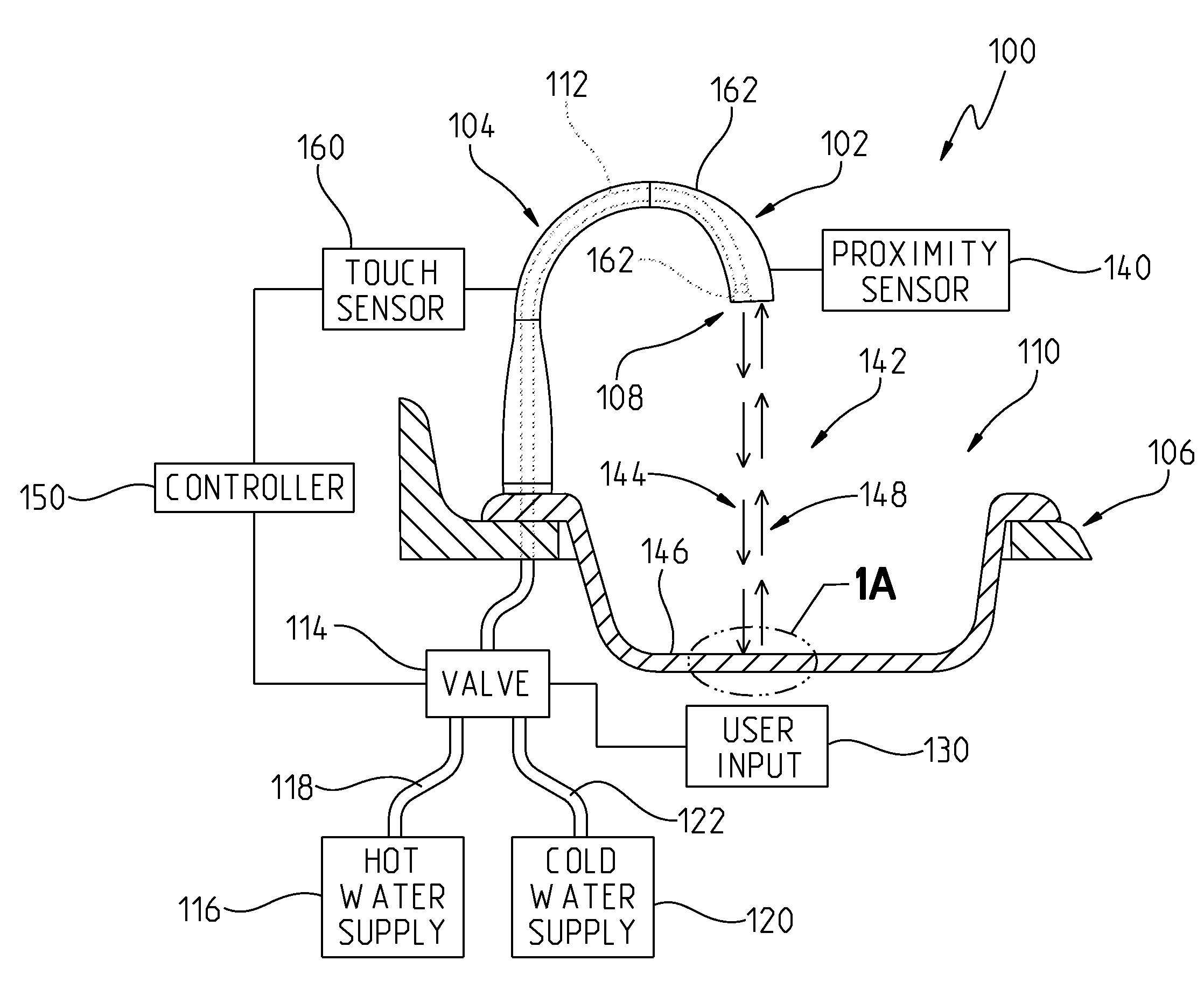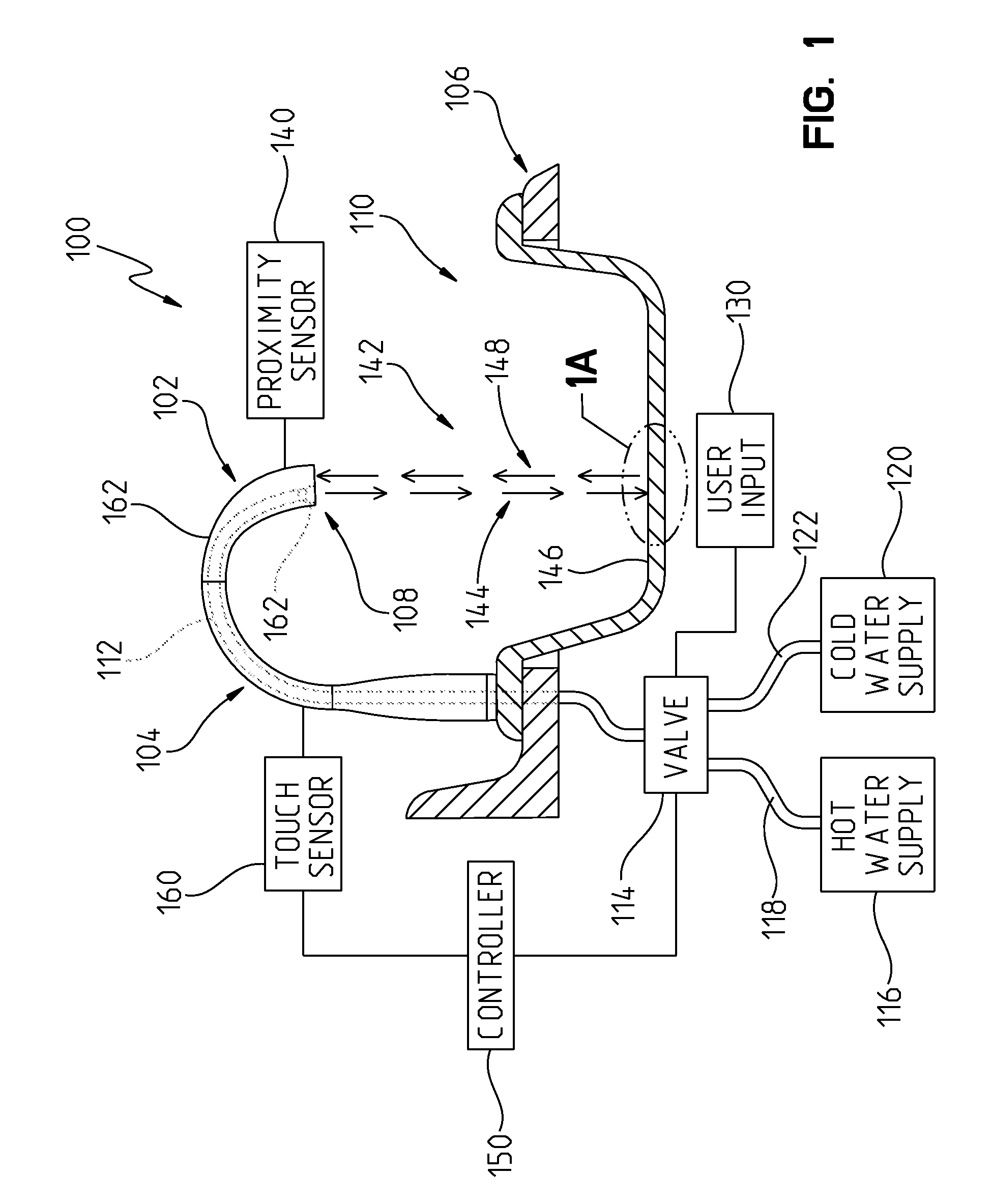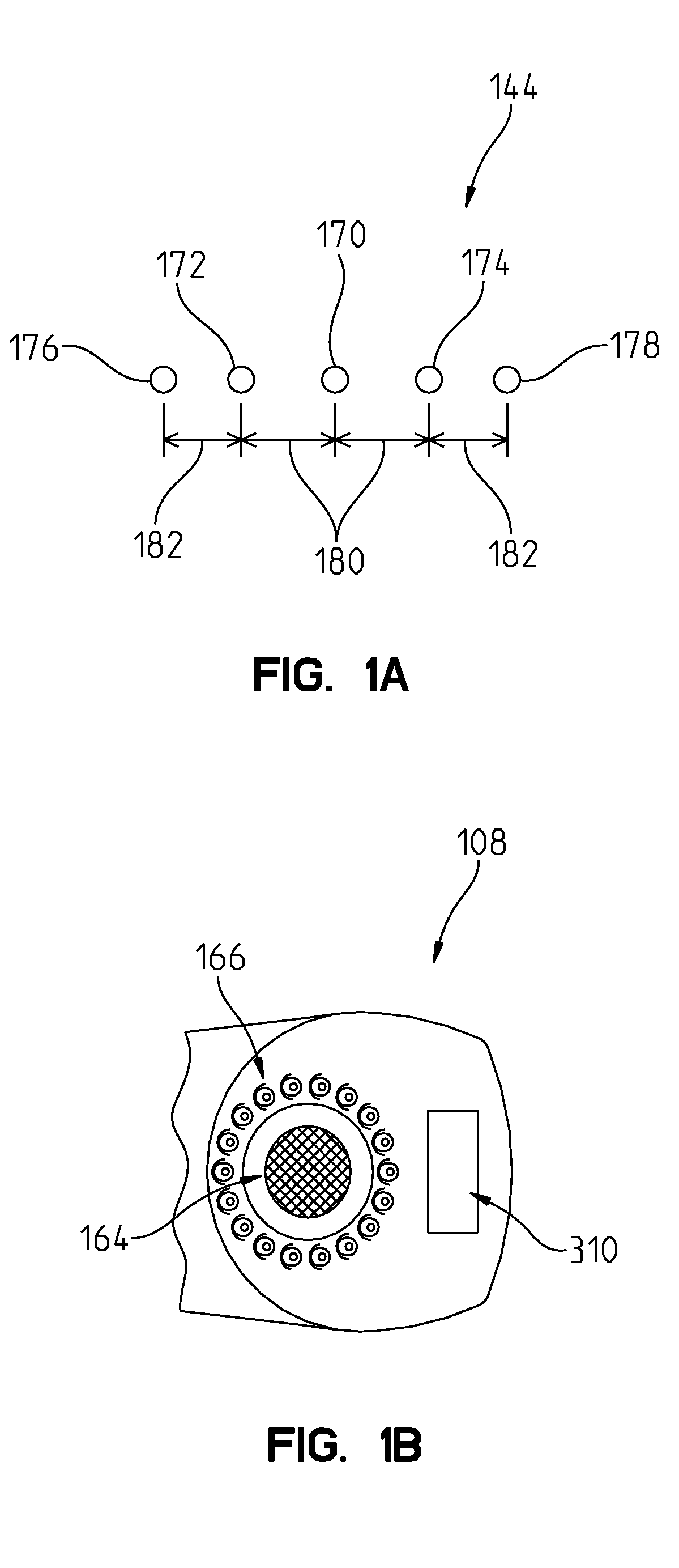Water delivery device
- Summary
- Abstract
- Description
- Claims
- Application Information
AI Technical Summary
Benefits of technology
Problems solved by technology
Method used
Image
Examples
Example
DETAILED DESCRIPTION OF THE DRAWINGS
[0047]The embodiments of the invention described herein are not intended to be exhaustive or to limit the invention to the precise forms disclosed. Rather, the embodiments elected for description have been chosen to enable one skilled in the art to practice the invention.
[0048]Referring to FIG. 1, an exemplary water delivery device 100 is shown. The water delivery device 100 is a faucet 102 having an elongated spout 104. Although a faucet 102 is illustrated other water delivery devices are contemplated, including shower systems; pot fillers; and any other device which controls the provision of water.
[0049]Faucet 102 is mounted to a sink deck 106 and a first end 108 of spout 104 is positioned over a sink basin 110. Faucet 102 includes at least one fluid conduit 112 which is in fluid communication with at least one valve 114. The valve 114 is further in fluid communication with a hot water supply 116 through a fluid conduit 118 and a cold water supp...
PUM
 Login to View More
Login to View More Abstract
Description
Claims
Application Information
 Login to View More
Login to View More - R&D
- Intellectual Property
- Life Sciences
- Materials
- Tech Scout
- Unparalleled Data Quality
- Higher Quality Content
- 60% Fewer Hallucinations
Browse by: Latest US Patents, China's latest patents, Technical Efficacy Thesaurus, Application Domain, Technology Topic, Popular Technical Reports.
© 2025 PatSnap. All rights reserved.Legal|Privacy policy|Modern Slavery Act Transparency Statement|Sitemap|About US| Contact US: help@patsnap.com



